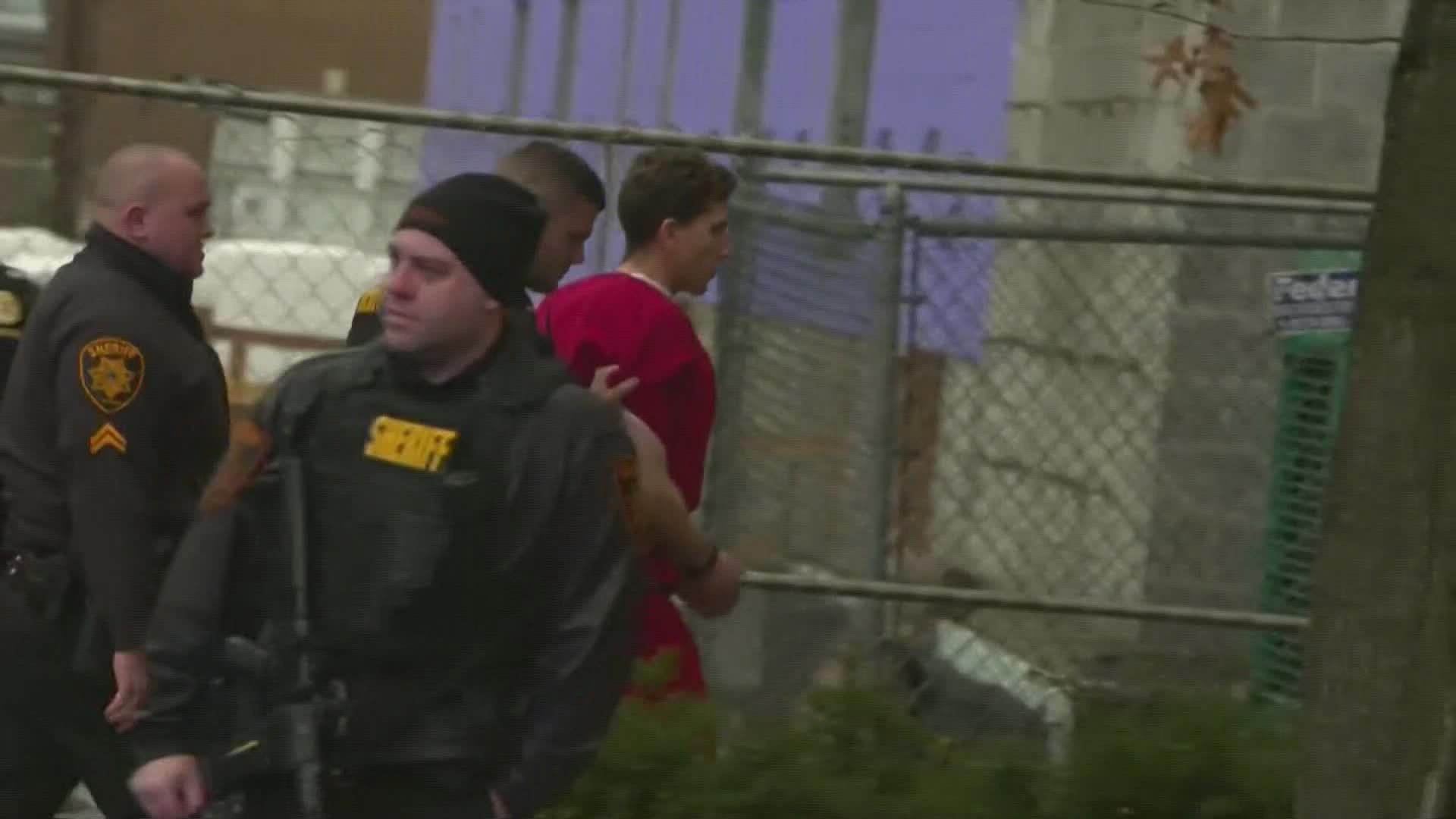MOSCOW, Idaho — Court documents in the murders of four University of Idaho students were released Thursday, revealing what investigators knew and when throughout the investigation, but some questions remain.
The students – Madison Mogen, 21, of Coeur d'Alene, Idaho, and Kaylee Goncalves, 21, of Rathdrum, Idaho; Xana Kernodle, 20, of Post Falls, Idaho; and Ethan Chapin, 20, of Conway, Washington – were found stabbed to death Nov. 13 in a Moscow, Idaho rental house.
Bryan Kohberger, 28, was arrested on Dec. 30. He faces four counts of first-degree murder and felony burglary.
What we know
The court documents were released as Kohberger made his first court appearance Thursday after he was extradited from Pennsylvania. The documents reveal investigators were able to piece together surveillance video, cellphone records and DNA evidence to identify a suspect and ultimately charge Kohberger.
Here's what we know:
Surveillance video
We now know investigators used surveillance video, both from the Moscow neighborhood where the murders happened and the Washington State University (WSU) campus, to identify a suspicious vehicle – a 2015 white Hyundai Elantra.
The Elantra was captured on video driving around the victims’ neighborhood several times beginning at 3:30 a.m. on Nov. 13 and again at 4:20 a.m. when it left the area at a “high rate of speed.”
According to the documents, investigators were able to use the surveillance video to track the Elantra traveling through Pullman, Washington, where Kohberger lived, to the victims’ neighborhood in Moscow, Idaho and back.
Moscow police asked area law enforcement to be on the lookout for Elantras fitting the suspicious car’s description. This led to a WSU police officer locating the white 2015 white Hyundai Elantra belonging to Kohberger.
Cellphone data
Investigators were able to use Kohberger’s cellphone records to follow the path the Elantra took. Investigators said the records indicate Kohberger turned off his cellphone during the killings to conceal his whereabouts.
Before data cut out at 2:47 a.m., it showed Kohberger left his apartment and traveled south through Pullman. When Kohberger’s phone reports back to the network at 4:48 a.m., the phone was near Blaine, Idaho, which is south of Moscow. Data shows Kohberger then returned to his Pullman apartment.
The documents said Kohberger’s cellphone was found to be near the victims' residence at least 12 times prior to Nov. 13, including as early as Aug. 21.
DNA found at the scene
According to the documents, investigators found a knife sheath, with "Ka-Bar" 'USMC" and the United States Marine Corps eagle globe and anchor insignia stamped on the outside of it, in the bedroom of one of the victims.
DNA evidence obtained from the knife sheath at the scene and from Kohberger's parents' house was tested at the Idaho State Lab. The results showed the DNA from the parent's house was almost certainly from the father of the person whose DNA was on the knife sheath.
Eyewitness accounts
We now also know one of the surviving roommates in the house reportedly came into contact with Kohberger on the night of the murders.
The roommate woke up around 4 a.m. to what sounded like one of the victims playing with her dog before hearing the victim say, “there’s someone here," according to the court documents.
The roommate said she looked outside her room after but didn’t see anything. The roommate reportedly later heard what sounded like crying from another victim’s bedroom and heard a male say something to the effect of "It's OK. I'm going to help you."
The roommate opened her door a third time after hearing the crying and reportedly saw a man in “black clothing and a mask” walking toward her that she didn’t recognize. The roommate told investigators the man walked past her as she stood in a "frozen shock phase." She said she closed her door and locked it as the man left through a sliding door.
What we don’t know
What was Kohberger's motive?
The biggest outstanding piece of information in the murder investigation is the motive.
The murders took place near the University of Idaho campus and Kohberger was studying criminology at WSU, across state lines.
The court documents released did not reveal if Kohberger had a relationship with those who lived at the victims' home.
Police said in November that evidence found at the scene leads them to believe that the students were targeted. It is unclear why Kohberger allegedly targeted the victims.
Investigators said nothing appeared to have been stolen from the victims or the home. It is also unclear how much premeditation went into the murders.
What happened between the murders and police being called?
Another piece of information yet to be answered is what happened between when the murders reportedly took place and the first call to police.
Investigators believe the murders took place between 4 a.m. and 4:25 a.m. The first call to police was at 11:58 a.m.
It is unknown what the roommate who came in contact with the suspect did after closing her door and locking it.
One other roommate was also in the home at the time.
What happened to the murder weapon?
Although investigators found a knife sheath at the scene, no murder weapon has been found.
We know from autopsies, the victims all died from multiple stab wounds from a "pretty large knife."
Investigators contacted local businesses and searched trash dumpsters in the victims' neighborhood in search of the knife used.
The type of knife that is correlated with the knife sheath found at the crime scene is a "Ka-Bar," named after the company that makes the knife. The knife is traditionally a 7-inch carbon steel clip-point fixed-blade, according to the company's website. It was first adopted as a combat knife by the United States Marine Corps in the 1940s.
It is unknown if Kohberger or his family had any connection with the U.S. military.
It is unclear what happened to the murder weapon.

